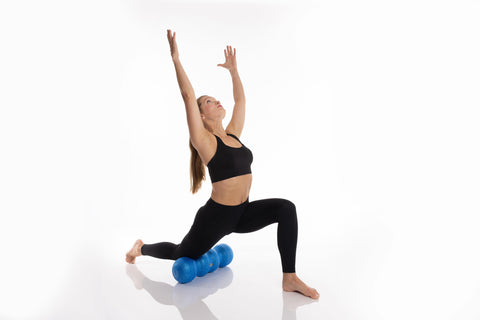

Foam rolling has become a staple in many fitness and wellness routines, praised for its ability to alleviate muscle tension, improve flexibility, and aid in recovery. However, amidst its popularity, several myths and misconceptions about foam rolling have emerged, leading to confusion among enthusiasts and skeptics alike. In this blog post, we'll delve into some of the most common myths surrounding foam rolling and separate fact from fiction, with a slight emphasis on how Rollga foam rollers address are the better choice over a traditional foam roller.
Myth 1: Foam Rolling Is Only for Athletes
Fact: While foam rolling is indeed popular among athletes for pre-workout warm-ups and post-workout recovery, it's not exclusive to the athletic community. Foam rolling offers benefits for individuals of all fitness levels, from beginners to seasoned athletes. Whether you're a desk worker dealing with tight muscles from sitting all day or a weekend warrior recovering from a tough workout, foam rolling can help alleviate muscle tightness and improve overall mobility.
Rollga emphasizes inclusivity in its approach to foam rolling. Their innovative designs cater to individuals of various body types and fitness levels, ensuring that everyone can experience the benefits of foam rolling regardless of their athletic prowess.
Myth 2: Foam Rolling Causes More Harm Than Good
Fact: One of the most common misconceptions about foam rolling is that it can cause injury or exacerbate existing muscle soreness. However, when done correctly, foam rolling is a safe and effective way to release muscle tension and promote recovery. It's essential to use proper technique and listen to your body's cues to avoid overdoing it.
Rollga foam rollers are designed with precision and comfort in mind, allowing users to target specific muscle groups without putting excessive strain on joints or sensitive areas. The unique contoured shape of Rollga rollers provides optimal support and pressure distribution, ensuring a safe and effective foam rolling experience, avoiding bones, tendons, and your spine.
Myth 3: Foam Rolling Can Replace Stretching
Fact: While foam rolling and stretching are both beneficial for improving flexibility and mobility, they serve different purposes and should ideally be incorporated into a well-rounded fitness routine. Foam rolling helps release muscle tension and alleviate tightness by applying pressure to targeted areas, while stretching focuses on elongating muscles and improving range of motion.
Rollga encourages a holistic approach to wellness that includes both foam rolling and stretching. By combining the two practices, individuals can maximize their flexibility, reduce the risk of injury, and enhance overall performance in physical activities.
Myth 4: All Foam Rollers Are Created Equal
Fact: Not all foam rollers are created equal, and the quality of the roller can significantly impact its effectiveness and durability. Cheap, low-quality foam rollers may lose their shape over time or fail to provide adequate support, leading to a subpar foam rolling experience.
Rollga sets itself apart from other foam rollers with its premium quality and innovative design. Constructed from high-density EPP foam and featuring a patented contoured shape, Rollga rollers offer superior durability, support, and comfort compared to traditional foam rollers. Plus, Rollga's variety of sizes and densities cater to individual preferences and specific needs, ensuring an optimal foam rolling experience for every user.
Myth 5: Foam Rolling Is Painful and Uncomfortable
Fact: While foam rolling may cause some discomfort, especially when targeting tight or sensitive areas, it shouldn't be excessively painful. The key is to find the right balance between pressure and tolerance, gradually increasing intensity as your muscles adapt to the practice.
Rollga's thoughtful design and construction prioritize user comfort without compromising effectiveness. The contoured shape of Rollga rollers allows for smooth and controlled movements, minimizing discomfort while targeting muscles deeply. Additionally, Rollga's variety of densities provides options for users to customize their foam rolling experience based on their comfort level and individual needs.

Foam rolling is a valuable tool for improving flexibility, alleviating muscle tension, and enhancing overall wellness. By debunking common myths and misconceptions surrounding foam rolling and highlighting the benefits of Rollga foam rollers, individuals can make informed decisions about incorporating this effective practice into their fitness and wellness routines. Remember, with proper technique and quality equipment like Rollga rollers, foam rolling can be a safe, enjoyable, and rewarding experience for everyone.
